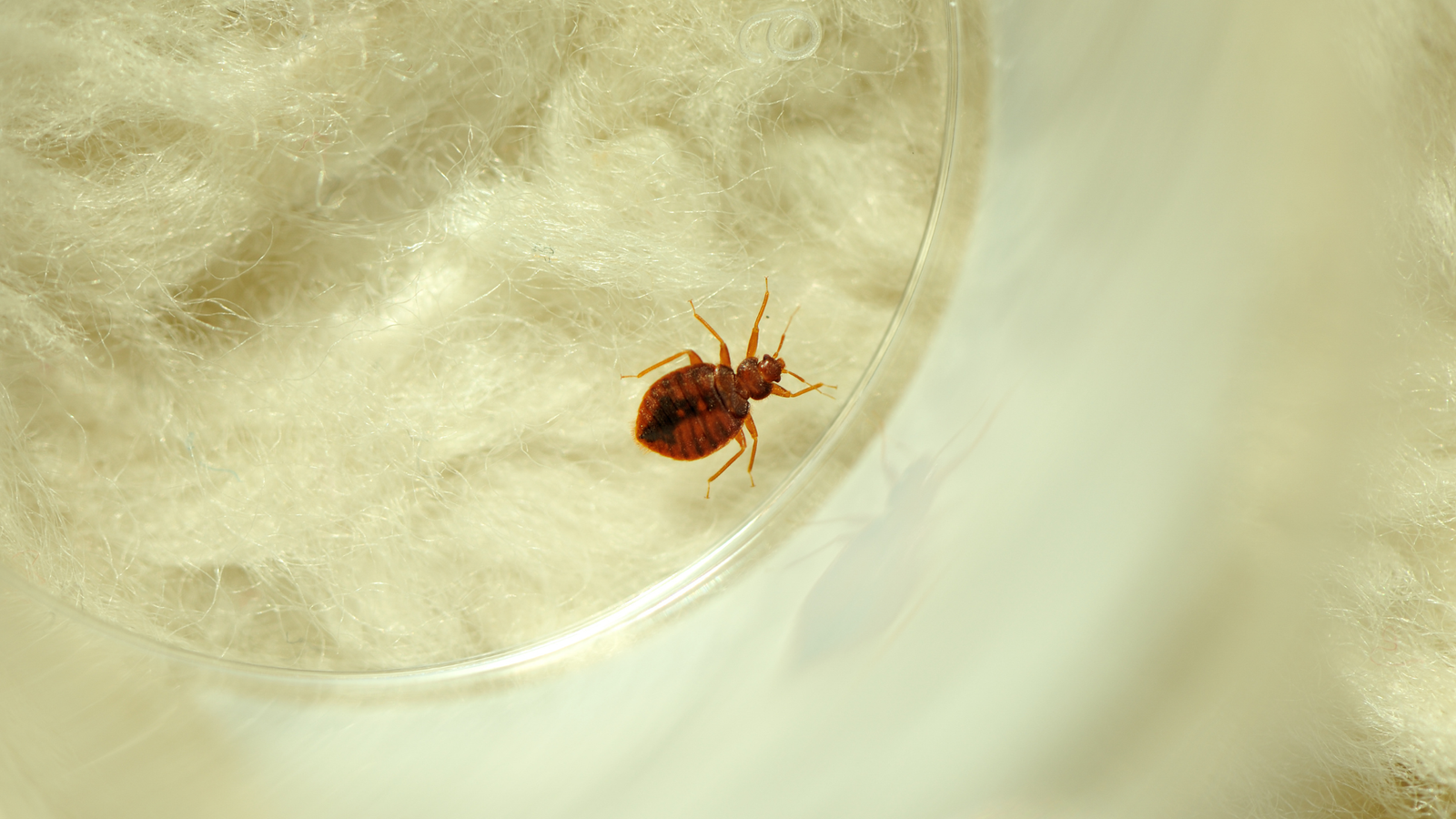Where do bed bugs come from and what should you know?

Although our homes belong to us, they sometimes attract unwanted guests – parasites. Bed bugs can become a serious problem, hiding in mattresses, furniture crevices, and bed frames. Even worse, these insects feed on human blood at night, causing significant discomfort.
To better understand the enemy, let’s take a closer look at where bed bugs come from and what steps we can take to deal with them effectively.
Table of contents
A short introduction to bed bugs
Bed bugs are insects from the order Hemiptera. They feed on human blood while a person is asleep, which is why their peak activity usually occurs at night.
The most favorable conditions for bed bugs to settle and reproduce are a stable indoor temperature (which is why proper ventilation is important), hard-to-reach hiding places, and dark areas. And of course, they need humans, since blood is their primary food source.

How do bed bugs get into our homes?
Even clean homes can sometimes become infested with bed bugs. Here are the most common ways they find their way inside:
- From other accommodations. Bed bugs often come from hotels, hostels, and similar lodging facilities. They may live in bed frames and mattresses, from where they crawl into suitcases, cling to clothing, and eventually move into your home. This is the most common reason why bed bugs appear in homes.
- Through second-hand furniture. Buying a used bed, sofa, armchair, or mattress can also bring these pests along. That’s why it’s important to thoroughly inspect any used furniture before bringing it indoors. Remember, bed bugs can hide in seams and crevices, making them difficult to spot.
- From public places. You can also pick up bed bugs in places like libraries, movie theaters, or public transport. They may cling to your clothing and travel back home with you.
- From neighbors. If you live in an apartment building, there’s a chance of getting bed bugs if your neighbors have them. These pests can enter your home through ventilation ducts, pipes, wall cracks, or electrical outlets, especially in older buildings.
- Carried by guests. Visitors to your home may unknowingly bring bed bugs with them.
Bed bugs do not appear out of nowhere – they always enter from the outside. By understanding where bed bugs come from most often, you can significantly reduce the risk of them settling in your living space.
The first signs of bed bugs in your home
Although bed bugs can be found in living rooms, hallways, or other parts of the home, they most often settle in bedrooms. There are several signs that may reveal you have these unwanted guests:
- After sleeping, you may notice bed bug bites on your body – they appear red and usually itch. They are most often found on the back, legs, and arms. A key sign is that bed bug bites often cluster together or appear in rows.

- On the bedding, you may notice dark spots, which are their droppings, or small traces of blood.
- If the infestation is more severe, you may detect an unpleasant, slightly sweet odor.
- Bed bug eggs or shed skins can also be found on the mattress or in furniture crevices.
If you notice even one of these signs, you should act quickly and take measures to combat these parasites. Left untreated, bed bugs reproduce very rapidly. It’s also important to know that a bed bug can survive without feeding for up to six months, and in cooler conditions, even up to a year.
How to get rid of bed bugs?
Insecticides can be effective against bed bugs, but their use should be left to professionals, who know which products to choose and what concentrations are required. Moreover, bed bug extermination is carried out in stages, taking into account the different phases of their life cycle.
Bed bug extermination at home – mission impossible?
Those wondering how to exterminate bed bugs at home should first assess how widespread the infestation is. If there are many parasites, the most effective and fastest solution will be professional help. However, if the number of bed bugs is still low, you can try to deal with them on your own. Here are a few things that bed bugs are afraid of:
- High temperatures. Bed bugs cannot survive at around 50–60°C (122–140°F). So, if you suspect an infestation or want to take preventive measures, wash bedding, clothing, and other textiles at no less than 60°C for about 30 minutes.
- Steam. Another effective weapon against bed bugs is steam. Use a steam cleaner on clothes, curtains, and other textiles. A steam cleaner is also a good option for carpets, upholstered furniture, and mattresses.
- Vacuuming. If you suspect bed bugs, grab a vacuum cleaner and thoroughly vacuum carpets, mattresses, bed frames, all cracks, upholstered furniture, and other possible hiding places. Remember to discard the vacuum bag immediately after cleaning.
These methods also work well as preventive measures.
Why is it so difficult to get rid of bed bugs?
It’s important to understand not only where bed bugs come from but also how to get rid of them – and that’s no easy task.
Because bed bugs hide in hard-to-reach places, eradicating them is complicated. They reproduce quickly, making the problem escalate fast.
On top of that, bed bugs can develop resistance to certain substances used for extermination. This risk is especially high when insecticides are applied incorrectly. That’s why it’s worth considering whether to attempt it on your own or rely on professionals. Bed bugs are among the fastest parasites to adapt to insecticides, and in many regions, their populations are already resistant to specific active ingredients.

When should you call professionals for bed bug extermination?
If the bed bug infestation in your home is still small, you can try the mentioned methods: heat, steam, and vacuuming. However, in any case, the most effective way to deal with the problem is to rely on professionals who have the knowledge and the right tools. So, if bed bugs have made their way into your home, the best solution is to contact licensed bed bug extermination specialists.

